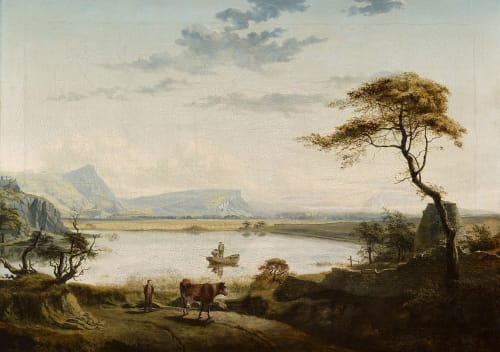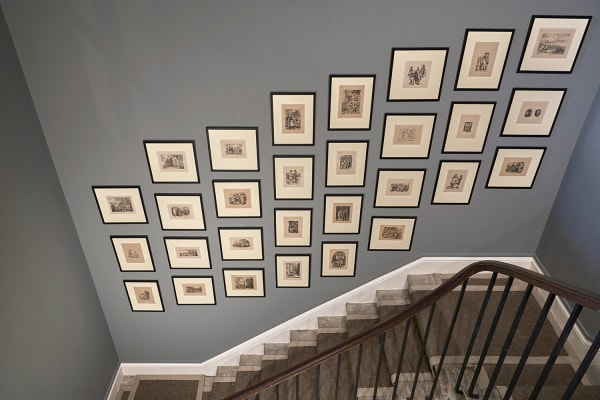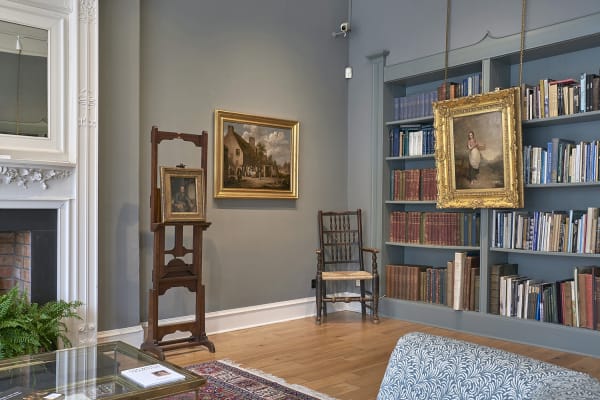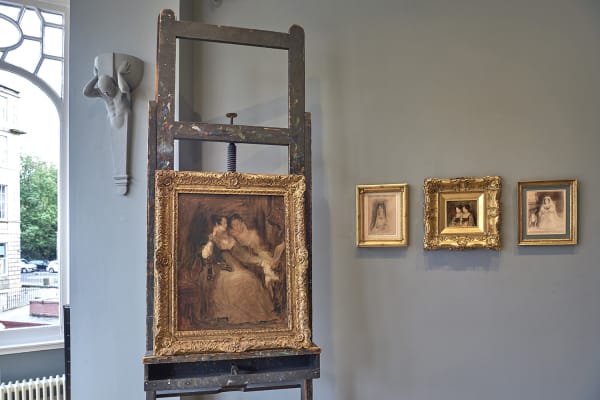The Wilkie Tradition
Scottish pastoral life became a literary focus at the close of the 18th century in the poetry of Burns, Ramsay and Fergusson. This, combined with an emerging availability of engravings after the Dutch and Fleming masters, encouraged artists in Scotland to look closer to home for their subject matter and away from antiquity and the classical tradition. David Allan can be largely credited with leading Scottish artistic taste toward genre painting, guiding Wilkie and his successors toward a new tradition. Allan was followed by Alexander Carse whose paintings were to exert a strong influence over the early work of Sir David Wilkie. Carse’s painting of Oldhamstock Fair (1796, National Galleries of Scotland) proved inspirational to the young Wilkie who produced a counterpart to this picture with his Pitlessie Fair (1804, National Galleries of Scotland). This painting, with its numerous groups of figures, painted with carefully studied expressions, contains all the elements which were to become important in the context of Scottish genre painting.
Wilkie gained public and official recognition early, enjoying great success both in his native Scotland and in London where he settled in 1805. At the relatively young age of 24, Wilkie was elected into the Royal Academy, becoming a full member in 1811, and two years later was commissioned to paint Blind Man’s Buff (1811, Royal Collection) for the Prince Regent. The Prince’s favour was important to Wilkie and on his accession George IV continued to reward him. At Sir Henry Raeburn’s death in 1823 Wilkie was appointed King’s Limner in Scotland, and when Sir Thomas Lawrence died in 1830 he was further appointed Royal Painter in Ordinary, an office confirmed by William IV and, later, Queen Victoria. He was awarded a knighthood in 1836.
Wilkie’s work was of huge importance to Scottish genre painting both during his life and throughout the nineteenth century. Although the passage of time has slightly diminished his fame and reputation, in his lifetime, he was regarded as the equal of his great contemporaries Turner and Constable. With his rapidly growing popularity it is not surprising that he soon had many followers, in both choice and treatment of subject. Indeed, his example was so potent that there were few Scottish genre painters of his generation who did not work more or less in his manner. While following his lead in subject matter and learning from his prodigious technical skills, they were nonetheless an individualistic and disparate group of painters.











